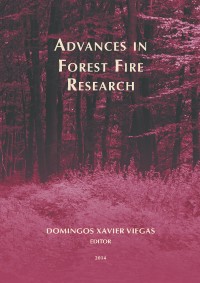Please use this identifier to cite or link to this item:
https://hdl.handle.net/10316.2/34080| Title: | FireStar3D: 3D finite volume model for the prediction of wildfires behaviour | Authors: | Accary, G. Meradji, S. Morvan, D. Bessonov, O. Fougère, D. |
Keywords: | Forest fires;turbulent reactive flows;modelling and numerical simulation;high performance computing | Issue Date: | 2014 | Publisher: | Imprensa da Universidade de Coimbra | Journal: | http://hdl.handle.net/10316.2/34013 | Abstract: | Most of the operational tools of fire propagation in natural environment are based on statistical or semi-empirical approaches. However, under conditions that deviate from the database used to construct these models, extrapolation may be completely random and, therefore, not very reliable. Subsequently, other models have been developed, taking into account the various interactions occurring between the vegetation and the surrounding fluid medium. This approach is based on a very detailed modeling of the physicochemical phenomena involved in a fire that are quite complex (turbulence, combustion, radiation, interaction between the fluid and vegetation ...). The 3D model developed in this work (referred to as "FireStar3D") is part of the latter class of models, and consists in solving the conservation equations of the coupled system consisting of the vegetation and the surrounding gaseous medium. The model takes into account the phenomena of vegetation degradation (drying, pyrolysis, combustion), the interaction between an atmospheric boundary layer and a canopy (aerodynamic drag, heat transfer by convection and radiation, and mass transfer), and the transport within the fluid phase (convection, turbulence, gas-phase combustion). This paper presents the validation of this 3D model that was conducted for a fire in confined environment, by reproducing experiments of fuelbed fire in a wind tunnel carried out by Catchpole et al. in 1998. The comparison between the simulations and the experimental data is mainly based on the rate of spread of fire or ROS (velocity of the fire front). A good agreement is obtained for most of the simulations that were conducted, and a study of the dependence of the rate of spread on the wind speed and on the fuel bed characteristics, particularly the fuel moisture content, is carried out. | URI: | https://hdl.handle.net/10316.2/34080 | ISBN: | 978-989-26-0884-6 (PDF) | DOI: | 10.14195/978-989-26-0884-6_27 | Rights: | open access |
| Appears in Collections: | Advances in forest fire research |
Files in This Item:
| File | Description | Size | Format | |
|---|---|---|---|---|
| 978-989-26-0884-6_27.pdf | 1.88 MB | Adobe PDF |  |
Items in DSpace are protected by copyright, with all rights reserved, unless otherwise indicated.
